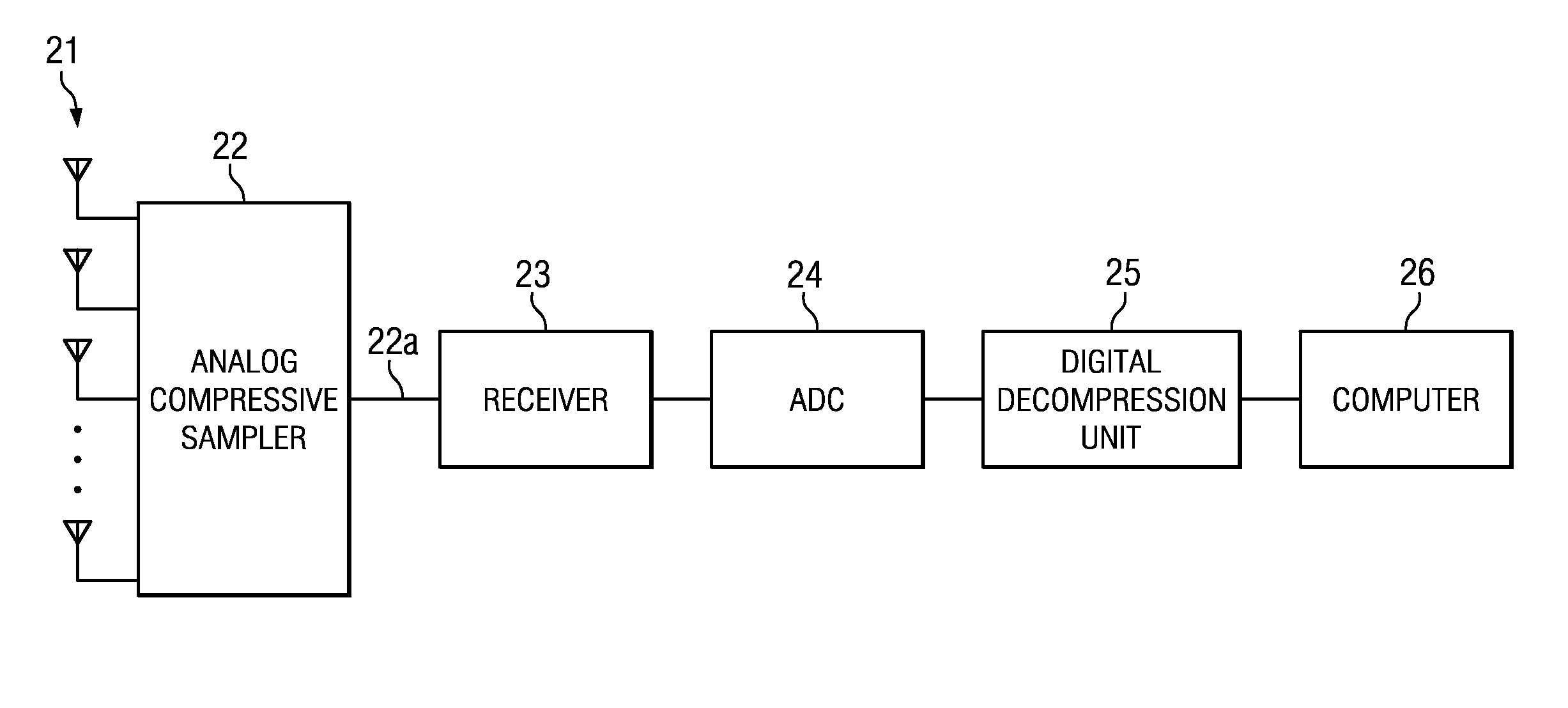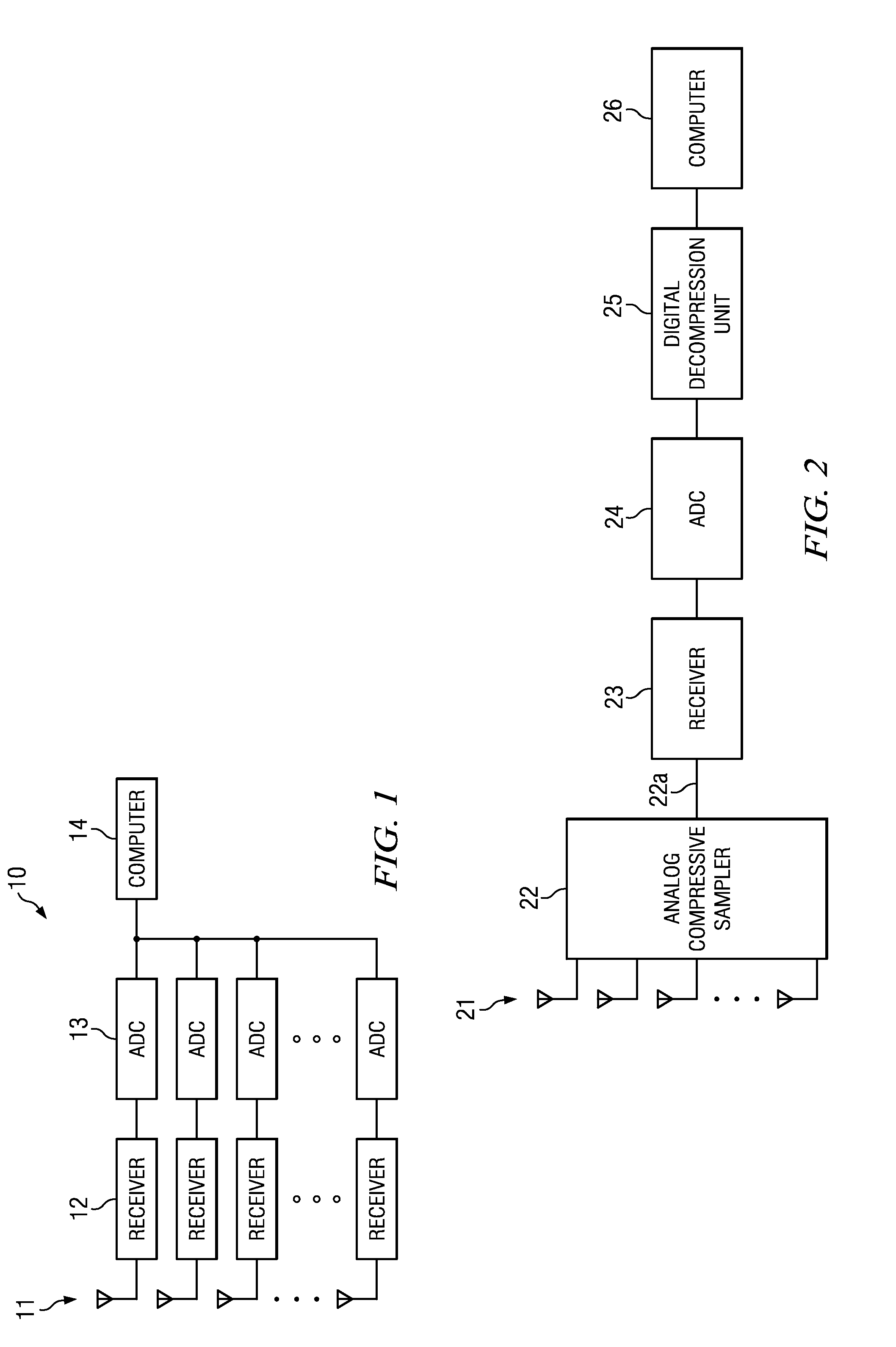Sensor Array Processor with Multichannel Reconstruction from Random Array Sampling
a random array and array technology, applied in the field of array processing, can solve the problems of many system costs, processing system costs of adding an additional sensor, and cost is usually driven not by the price of the sensor
- Summary
- Abstract
- Description
- Claims
- Application Information
AI Technical Summary
Benefits of technology
Problems solved by technology
Method used
Image
Examples
Embodiment Construction
[0009]A. System and Method Overview
[0010]As stated in the Background, conventionally, signals from each sensor of a sensor array are communicated to a computer for processing. This is referred to herein as a “multi-channel” system. The following description is directed to a method and system that simplifies sensor array processing by reducing the many multiple parallel channels to a single channel. The system can sparsely sample a spatially diverse set of sensor elements, and reconstruct the full time-series response of every array element.
[0011]FIG. 1 illustrates a conventional sensor array processing system 10. A number of sensors 11 each have an associated signal channel (wired or wireless) over which the sensor communicates its sensed signal. At the receiving end, each channel has an associated receiver 12 and a analog-to-digital converter (ADC) 13, which deliver the signal to a computer 14 for processing. In the example of FIG. 1, the multi-channel signals are communicated as a...
PUM
 Login to View More
Login to View More Abstract
Description
Claims
Application Information
 Login to View More
Login to View More - R&D
- Intellectual Property
- Life Sciences
- Materials
- Tech Scout
- Unparalleled Data Quality
- Higher Quality Content
- 60% Fewer Hallucinations
Browse by: Latest US Patents, China's latest patents, Technical Efficacy Thesaurus, Application Domain, Technology Topic, Popular Technical Reports.
© 2025 PatSnap. All rights reserved.Legal|Privacy policy|Modern Slavery Act Transparency Statement|Sitemap|About US| Contact US: help@patsnap.com



